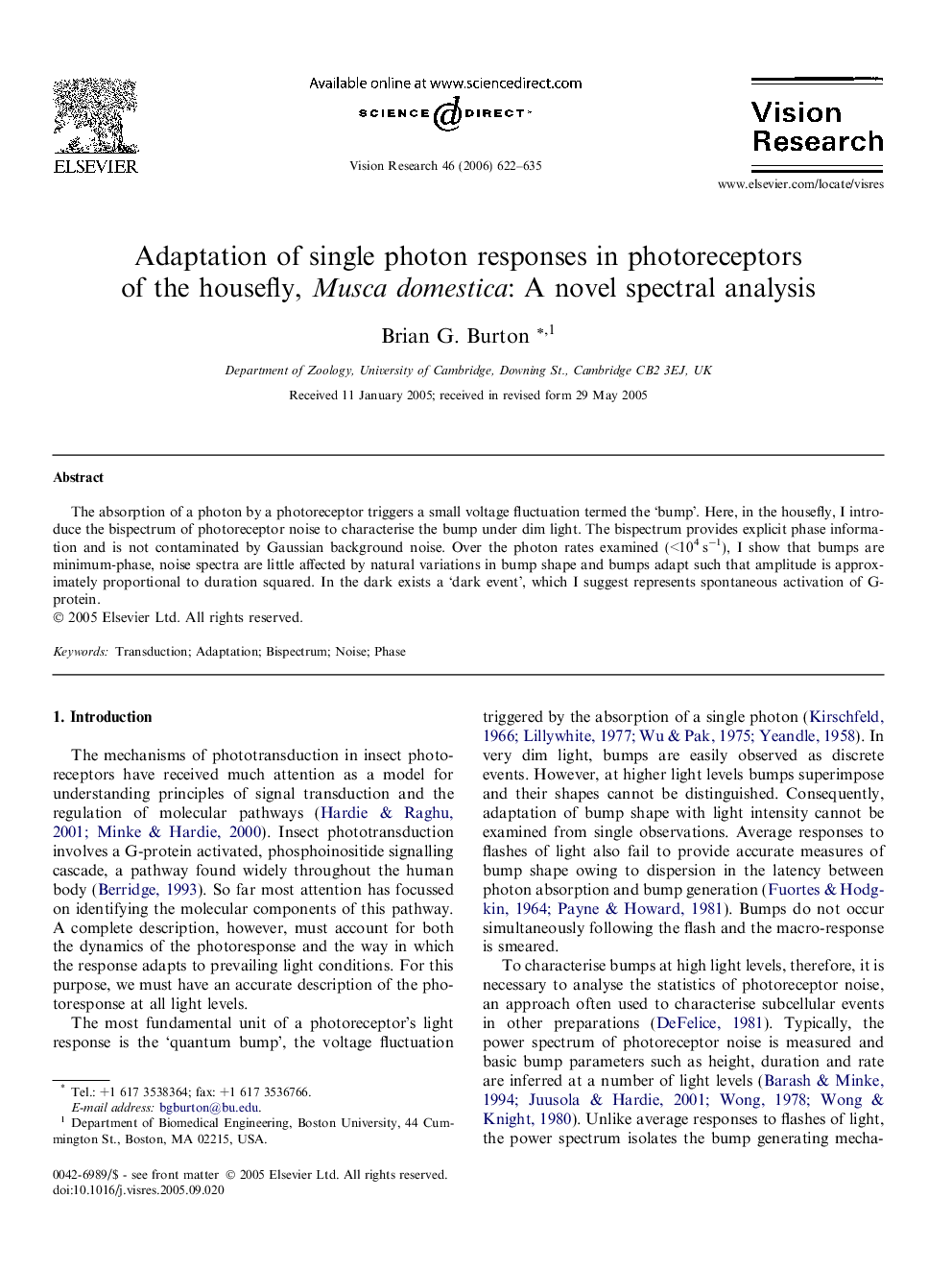| Article ID | Journal | Published Year | Pages | File Type |
|---|---|---|---|---|
| 4035827 | Vision Research | 2006 | 14 Pages |
Abstract
The absorption of a photon by a photoreceptor triggers a small voltage fluctuation termed the ‘bump’. Here, in the housefly, I introduce the bispectrum of photoreceptor noise to characterise the bump under dim light. The bispectrum provides explicit phase information and is not contaminated by Gaussian background noise. Over the photon rates examined (<104 s−1), I show that bumps are minimum-phase, noise spectra are little affected by natural variations in bump shape and bumps adapt such that amplitude is approximately proportional to duration squared. In the dark exists a ‘dark event’, which I suggest represents spontaneous activation of G-protein.
Related Topics
Life Sciences
Neuroscience
Sensory Systems
Authors
Brian G. Burton,
